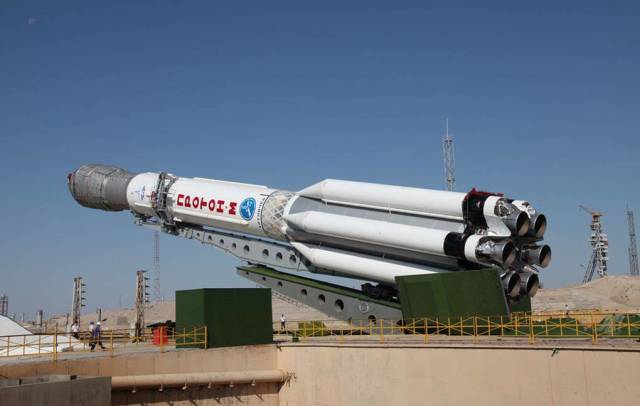The weight of the fairing was reduced by almost two tons, Rostec reported
MOSCOW, May 15. /TASS/. The weight of the head fairing of the upgraded Proton-M launch vehicle decreased by almost two tons due to the use of innovative developments of the Romashin ONPP Technologiya (part of the Rostec State Corporation). This was told to TASS in the press service of Rostec.
"Thanks to the developments of the ONPP Technologiya, which is a participant in the Proton-M launch vehicle modernization program, it was possible to reduce the weight of the head fairing by one and a half tons only at the first stage of work. Currently, the fourth stage is underway, the weight of the fairing has been reduced by almost 2,000 kg, " the press service said.
As specified in the state corporation, in 2020, the company produced more than 750 units of high-tech products for the space industry. These products are intended for completing launch vehicles "Proton-M", "Angara-5", "Angara-1.2", spacecraft for various purposes.
Currently, ONPE Technologiya participates in almost 20 projects for the creation of spacecraft in the interests of six enterprises of the space industry, five more projects will be implemented until 2023 by order of enterprises engaged in the production of launch vehicles (launch vehicles).
Since 2009, the specialists of the ONPP "Technology "in close cooperation with the State Research and Production Center named after M. V. Khrunichev have been working on the creation of a new eco-friendly Russian universal rocket"Angara". For this rocket in its various modifications, ONPP Technologiya produces composite structures with an outer diameter of up to 5,200 mm and a length of up to 4,000 mm.
The Proton-M is a Russian three-stage heavy-class launch vehicle. It belongs to the Proton family of space carriers, created in the early 1960s. On June 22, 2018, Dmitry Rogozin, Director General of the state corporation Roscosmos, announced the closure of the Proton project. It is assumed that the operation of the Proton-M will be completed in 2025. According to him, the plans include the transfer of the Russian space industry to the launch vehicles of the new generation of the Angara family.

